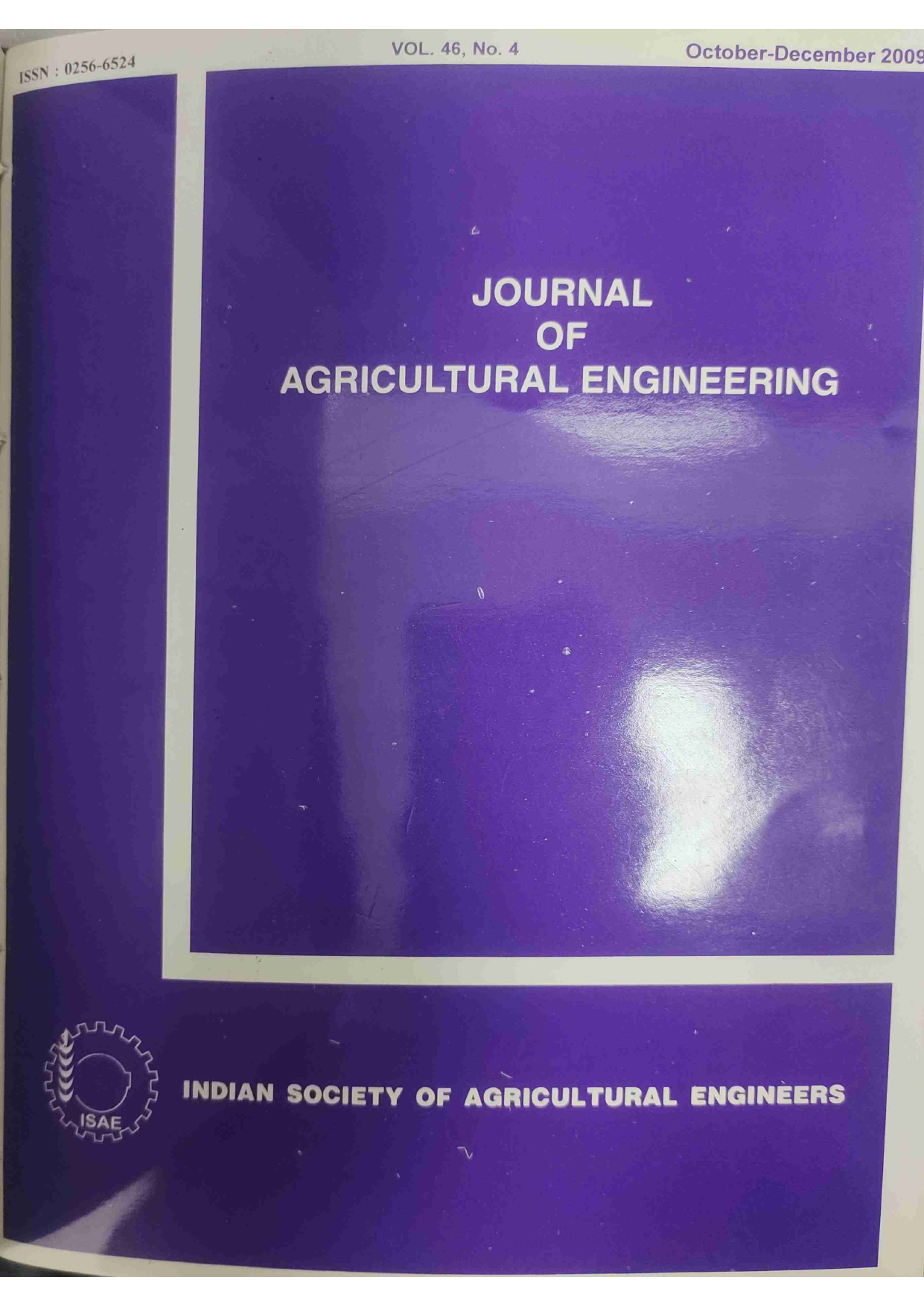Mole Drainage to Enhance Soybean Production in Waterlogged Vertisols
DOI:
https://doi.org/10.52151/jae2009464.1394Abstract
Vertisols have poor internal drainability when wet, requiring closely spaced drains for excess water removal. Mole drainage is a pipe-less drainage technology popular in UK, New Zealand and Australia. Its use in fine textured soils using standard mole ploughs is mainly confined to those countries where mole plough development took place. In India, few laboratory studies were reported apart from one field study at Digod, Rajasthan on mole drainage. A 4-year (2004–2007) field experiment was carried out at the Central Institute of Agricultural Engineering, Bhopal on the feasibility of mole drainage for draining excess rain water in vertisols. A 56 PS wheeled tractor was used in drawing mole drains at 2, 4 and 6 m spacings and at a constant depth of 0.60 m at a grade of 0.8 per cent. In each of the spacing, 4 lateral drains were drawn to a length of 60 m. The soil moisture content was 22.5% at moling depth. The crop yields increased by about 50% in the mole drained plots, as compared to the control. The cost of installation of mole drains was recovered in the first year of installation. For four years, the drains were functioning well as a result of which soybean yields increased in mole drained area.
References
Cavelaars J C; Voltman W F; Spoor G. 1994. Subsurface Drainage systems. In: Drainage Principles and Applications Ed.by H.P.Ritzema, ILRI publication 16, Second edition, 913-927.
Dwivedi S P; Ramana R S; Vaadivelu K V; NavalgundA; Pande A B. 2002. Spatial-distribution of rainy season fallows in Madhya Pradesh: Potential for increasing productivity and minimizing land degradation. GlobalTheme 3: Water Soil, and Agro-bio-diversity Management for Ecosystem Health. Report no. 3. ICRISAT, Hyderabad, 40-60.
McAuliffe K W; Horne D J. 1994. The limiting factor in a mole drain system. In: Drainage Principles and Applications Ed.by Ritzema H P. ILRI publication, 16 (4), 319-325.
Misra A K; Sarkar T K; Bhattacharya A K. 2000. Simulation studies of mole drain characteristics. J. of Agril. Engng, 37(1), 39-54.
Sommerrfeldt J G; Chang C. 1986.Desalinization of an irrigated, mole-drained saline clay loam soil. Canadian J. of Soil Science, 67, 263-269.
Soong Si-Fu; Chang Wei. 1985. Subsurface drainage in lowland rice fields in China. Soil Physics and Rice, IRRI, Los Banos,351-366.
Spoor G; Cronin C J; Leeds-Harrison P.B. 1990. Mole drain installation for leaching purposes. Proc. Of Symposium on Land Drainage for Salinity Control in Arid and Semi Arid Areas, Cairo, Section 3, 47-54.
Spoor G; Hann M J; Godwin R J; Leeds-Harrison P B; Miller S M. 1994. Machinery developments for reducing draught and improving the grading characteristics of mole ploughs. In: Drainage Principles and Applications ed.by. Ritzema H P, ILRI publication 16(4), 327-336.














